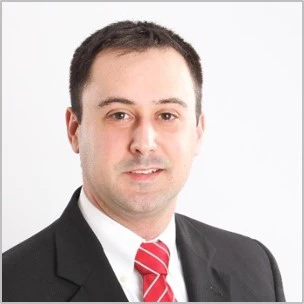4 best practices for reconciling unapplied cash
If your team is struggling to reconcile your organization’s unapplied cash, these four tactics—and their emphasis on automation—are for you.
Jan 13, 2025

Reconciling unapplied cash comes with its share of challenges. Pain points abound in a work environment defined by increasingly complex and labor-intensive billing processes, declining reimbursement rates, and overall demands for you and your team to do more with less.
To effectively streamline your unapplied cash reconciliation processes, automation is a must. Here are four best-in-class practices for more effectively managing and reconciling unapplied cash through automation. Two short case studies illustrate their proven effectiveness.
Best practice 1: Create an interdisciplinary steering committee
It’s no surprise that many healthcare organizations still operate in historical workflow, task, and function silos. Breaking these silos down can go a long way toward improving unapplied cash reconciliation. That’s because a more integrated approach gets everyone on the same page, sharing the same information, and working toward the same goals.
Creating an interdisciplinary steering committee from organizational areas tasked with the unapplied cash reconciliation process is one effective way to do so. Those areas should include finance, revenue cycle, treasury, and IT departments.
Best practice 2: Assess gaps in current processes and how to improve them
With the steering committee assembled, the team can now work in concert to assess current unapplied cash reconciliation processes and brainstorm ways to improve them. It can be helpful for you and your team to look at improving unapplied cash reconciliation through three lenses: business operations, tools and systems, and human capital.
Questions for the team to ask in each of these areas include:
Business operations
- What front-end processes can be corrected to create a best-in-class process on the back end?
- What manual tasks can and should be eliminated?
- Are there opportunities to automate manual processes?
- What bottlenecks and issues exist in current processes that decrease internal effectiveness?
Tools and systems
- Are workflow and automation technologies in place?
- Is technology being used effectively?
- Are systems scalable for growth?
Human capital
- Do we have the right people in the right positions—and the optimal organizational design—to support our processes?
Best practice 3: Use an automated three-way match reconciliation process
Your organization likely is managing an extraordinary number of transactions, including hundreds of thousands of incoming bank deposits and millions of patient payment postings within your patient accounting system each month. Using a three-way match reconciliation solution is an effective way to wrangle the immense number of transactions that you need to reconcile. Such tools automatically reconcile daily information from the bank, PAS, and postings to an organization’s general ledger through use of a daily feed from all three.
When assessing an automated three-way match reconciliation tool, make sure it has the following essential capabilities:
- Exception identification (for example, deposits that have not been posted) and an automated workflow for exceptions so they are redirected to the correct staff members, who can resolve the exceptions.
- Segregation between nonpatient and patient cash deposits and identification of the nonpatient portions of patient cash deposits.
- Ability to provide real-time status of cash deposit postings.
- Identification of PAS postings not matched to a deposit.
- Reconciliation of the activity above to the unapplied cash GL account.
It’s also essential to evaluate whether an automated three-way match reconciliation tool can meet your organization’s robust reporting needs at month-end. Like Kodiak’s automated reconciliation technology solution, such tools should provide the following:
- Identification of specific patient cash deposits, including any impacts from provider-level balance activity that remain either partially or fully unposted at month-end.
- Identification of nonpatient portions of cash that need to be recorded in the GL.
- Identification of PAS postings not matched to a deposit.
- Monthly reporting reflecting:
- Matching activity.
- Detailed activity of nonpatient portions of patient cash deposits.
- Reports assisting finance with the reconciliation of unapplied cash.
Best practice 4: Identify the role of technology and automation in daily cash management
In addition to considering a technology tool that performs a three-way match reconciliation between the bank, PAS, and your GL, other technology solutions to address your unapplied cash reconciliation trouble spots are available. Consider:
- Using an automated cash posting tool.
- If you have a payor that doesn’t provide an electronic 835 (remittance advice), obtain a manufactured 835 solution. Various banking and revenue cycle companies offer this type of solution.
- Implementing alternative payment strategies, such as:
- Collecting copayments in advance of appointments.
- Using patient payment portals.
- Going cashless.
Automating unapplied cash reconciliation: 2 case studies
Case study 1: Replacing an ineffective manual process
The challenge: A large academic health system needed help fixing its broken manual process for reconciling unapplied cash. Challenges resulting from the ineffective process included several significant dollar write-offs associated with one system hospital’s unapplied cash GL account.
The solutions: Kodiak’s experts combined their deep industry expertise, insights into unapplied cash reconciliation leading practices, and a unique technology solution to work with the health system to achieve its goal of automated, daily unapplied cash reconciliation. Some of the solutions incorporated included:
- A full evaluation of the health system’s current state performance and processes.
- Process improvement recommendations.
- Development of unique payment identifier processes (by transaction type for matching of a deposit).
- Daily and monthly account reconciliation process changes.
- Automation of the health system’s daily—and monthly—cash reconciliation process by the business office and general accounting.
The outcomes:
- An overall automated deposit three-way match rate of 97%.
- Identification of additional processes that permitted the health system’s finance and patient accounting teams to more easily identify patient- and nonpatient-related activity and to communicate in a more efficient manner to resolve exceptions.
- The health system’s business office was able to understand how they could use Epic Cash Management to efficiently verify and resolve posting differences.
Case study 2: Replacing an ineffective manual process
The challenge: A large health system had built an internal unapplied cash reconciliation solution, but the system was still unable to complete accurate reconciliations of unapplied cash accounts in a timely manner.
The solutions: Kodiak’s experts again combined their deep industry expertise, insights into cash reconciliation leading practices, and a unique technology solution to work with the health system to achieve its goal of automated, daily unapplied cash reconciliation. Some of the solutions incorporated included:
- Evaluation of current state performance and processes.
- Project management, including development of implementation plans, weekly status meetings, and identification of risks.
- Development of unique payment identifier processes by transaction type.
- Daily and monthly account reconciliation process changes.
- Automation of daily and monthly unapplied cash reconciliation process.
The outcomes:
- Completion of GL reconciliations within the close period.
- Automated daily and monthly unapplied cash account reconciliation process.
- 95.55% of all transactions were reconciled through automated matching.
- The health system’s patient financial services and accounting reconciliation teams now have more time to explore solutions to other challenges and move on to new systemwide process improvement initiatives.
We can ease your pain points
If you and your team are struggling with reconciling your organization’s unapplied cash, you’re certainly not alone. Kodiak’s finance and reimbursement experts are standing by to share their unapplied cash expertise. We can help you and your team implement proven strategies to mitigate risks in unapplied cash and make your processes smoother and more effective, saving your organization time, money, and valuable full-time equivalent resources.
Contact us today and start feeling relief from your unapplied cash reconciliation pain points tomorrow.
Contact Us
Want the latest updates from Kodiak?
Get access to our communications, including our Healthcare Connection newsletter, to tap into industry trends, CPE webinars, and more.



